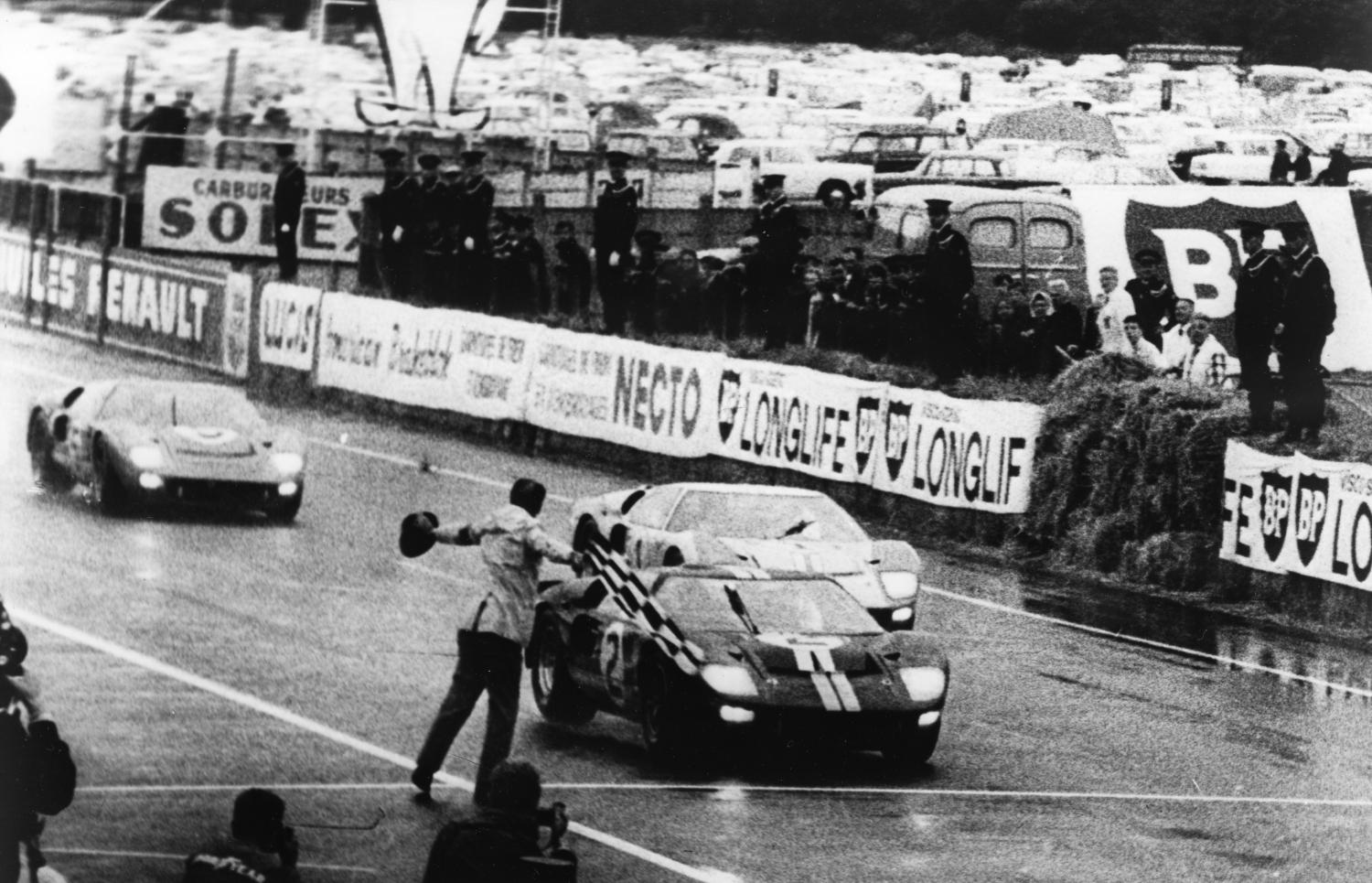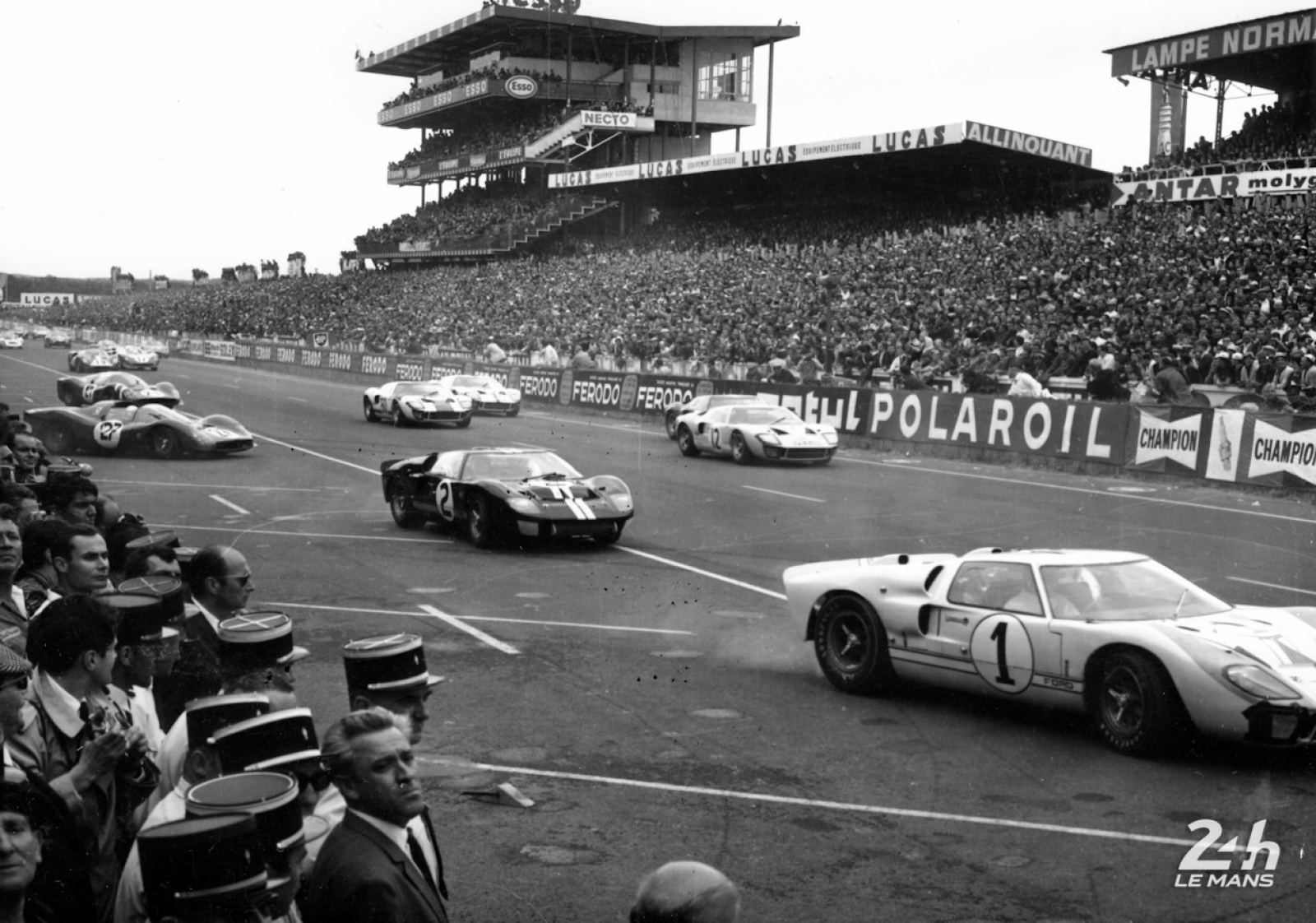McLaren Racing to join the Hypercar fray in 2027
McLaren Racing is set to join the Hypercar grid for the 2027 season of the FIA WEC Endurance World Championship, with aspirations of a triumphant return to 24 Hours of Le Mans.
Read the article
24h Le Mans
The 34th 24 Hours of Le Mans was a race unlike any other. We have all the facts and figures from the Automobile Club de l’Ouest archives but, like the legend itself, the interpretations are endless.
On 19 June 1966, Automobile Club de l’Ouest president Jean-Marie Lelièvre was particularly moved when presenting the winners of the world’s greatest endurance race with the trophy. For the 1966 edition had been anything but run-of-the-mill. Not only had Ford broken speed records to end Ferrari’s winning streak, but the eventful race and its dramatic finish sparked a debate that still smoulders today. Why? Because to celebrate its maiden Le Mans win in style, Ford hatched a plan to have its cars cross the finish line together in triumph.
A 20-metre gap makes it the closest finish in the history of the 24 Hours of Le Mans. Lap by lap data clearly indicates a gap of half a second between the #2 and the #1 Fords at the finish line, which equates to 6 metres. However, the regulations concerning cars in the same lap that finish together indicate that their starting positions should be taken into account. The #1 started in second place, while the #2 was in fourth place on the grid, 14.28 metres behind. When added to the 6 metres at the finish, it results in a shade over 20 metres.
Photos of the finish taken from different angles clearly show the #2 was completely over the line before the #1.
Because Ford management had instructed the drivers of all three cars to finish together, the image of a flamboyant Ford win being excellent publicity. As the first two cars were racing in the same lap, that meant engineering a tie for the finish. The #5 in third place was eleven laps behind them.
As the race entered the last hour, the #1 was ahead. Ken Miles took the wheel in the 347th lap. He was 34 seconds ahead of the #2, which had already refuelled and would not need another pit stop. He was doing 4-minute laps as instructed by Carroll Shelby. The #2 was lapping in 3:54, sometimes faster. The two cars were therefore side by side as of lap 351 and remained so until the finish. But which was first?

The story goes that the race commentator (whose vantage point was not ideal for the finish) announced the #1 as the winner, causing a short-lived commotion. Fabrice Bourrigaud, Race Heritage and Museum Director, continues the story: “A photo finish was practically impossible. You have to remember it was raining and visibility was practically zero as the clouds were so low. The finish line is only a few centimetres thick. Drivers are seated practically at track level with a limited field of view. None of which was ideal to pull off a stunt like that. Car #1 was slightly ahead coming into the last straight. Did Miles ease off to wait for McLaren? Did McLaren accelerate to catch up? Is that how the #2 got ahead? Or was it a deliberate move to clinch a win?”
Whatever the case, Miles and Hulme (#1) were 34 seconds ahead going into the last hour of the race, a gap that would have been difficult to make up in ordinary circumstances. Earlier in the race, the #2 had held the lead for four hours. In the end, everyone played by the rules. The professional drivers obeyed orders and the officials applied the regulations.
The temporary exhibition devoted to the James Mangold movie Le Mans ’66 (Ford v Ferrari), starring Matt Damon and Christian Bale, was a real success attracting 13,600 visitors! Museum management has integrated some of the props donated by the production company to the ACO in a new space devoted to the movie and to the 1966 24 Hours of Le Mans. Visitors can find out all about the clash opposing Ford and Ferrari, the emblematic characters such as the driver Ken Miles and the ingenious Carroll Shelby, the story of the race, and how a movie set was created based on historical facts. Some of the documents and props are still displayed, such as the clock, the loudspeakers, the suits worn by Matt Damon and Christian Bale, the original flags, the dashboard of the Ford GT40 and the legendary car.